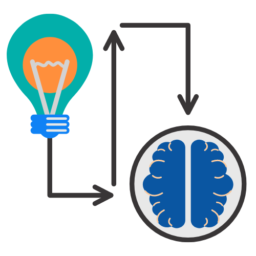Language Courses Recent Blogs
July 13, 2021
Cambridge defines engagement as ‘’ the process of encouraging people to be interested in the work of an organization, course, marketing strategy, etc.’’
![]() Engagement can be described as a measure of a student’s participation in the learning process in the context of education. This covers how they connect with the teacher and their classmates. In short, the level of student engagement is a solid indicator of the likelihood of a successful learning experience.
At ELAM, we can measure engagement via our LMS (Learning Management System) LearnCube. They tackle this with these four steps:
Engagement can be described as a measure of a student’s participation in the learning process in the context of education. This covers how they connect with the teacher and their classmates. In short, the level of student engagement is a solid indicator of the likelihood of a successful learning experience.
At ELAM, we can measure engagement via our LMS (Learning Management System) LearnCube. They tackle this with these four steps:
![]()
 Engagement can be described as a measure of a student’s participation in the learning process in the context of education. This covers how they connect with the teacher and their classmates. In short, the level of student engagement is a solid indicator of the likelihood of a successful learning experience.
At ELAM, we can measure engagement via our LMS (Learning Management System) LearnCube. They tackle this with these four steps:
Engagement can be described as a measure of a student’s participation in the learning process in the context of education. This covers how they connect with the teacher and their classmates. In short, the level of student engagement is a solid indicator of the likelihood of a successful learning experience.
At ELAM, we can measure engagement via our LMS (Learning Management System) LearnCube. They tackle this with these four steps:
- Positivity – Ramping up their energy like greeting your student with a great big warm welcome, being friendly as the relationship is the conduit for learning.
- Personalization – making the content all about them and geared to what they are doing at work (i.e., an email, a presentation, preparing for an important discussion, etc.).
- Pitch and Pace – you must constantly adjust the pitch and pace to ensure that students learn in an optimal classroom. Some learn quickly, and others need more time, so use some activities like pair work and put the stronger students together and the lower-level students together and create breakout rooms.
- Partnership – get into the habit of teaching students to reflect on their learning. Teach the students to be their own tutors through analysis of what they need to learn more efficiently. For example: how do they organize their new vocabulary, what they do with new grammar structures learned, etc.
Here are the strategies we found by scouring the web:

The Synchronous Class
Some teachers stated they converted traditional classroom discussion tactics to live video chats for synchronous learning, while others found that digital tools helped enhance classroom involvement.- Using chat to check for understanding.
- Flip your classroom to stimulate deeper discussion.
- Use breakout rooms for pair work.
- Use the whiteboard and get the students to use it too.
Some Asynchronous Strategies
Although some teachers—and students—said that synchronous discussions were more engaging because they mimicked a traditional classroom, many educators found that asynchronous discussions were more equitable. They allowed students with low bandwidth, schedule constraints, or discomfort to engage with the entire class to participate.- Online chat groups are a great way to practice what you learn in class anonymously.
- Online collaborative tools like Padlet to create brainstorming boards, min-maps for new vocabulary, create collaborative business dialogues, stories, etc.
- Use the messaging tool in your LMS creatively: send language enigmas, jokes, small writing tasks, etc.















